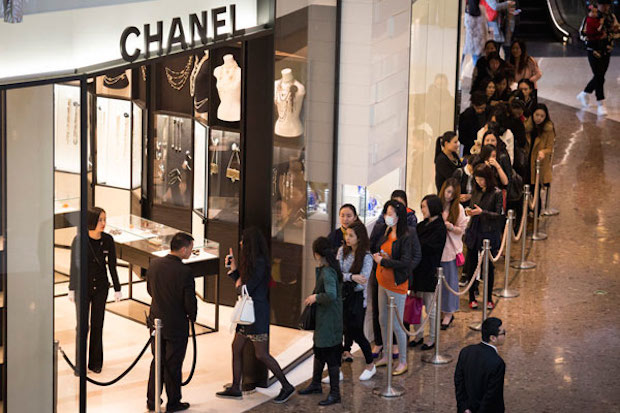Many marketers consider young adults aged between 18 and 24 as a distinct consumer segment that boasts considerable purchasing power. In the UK, such consumers spend around £10 billion each year, while it has been projected that young adults will inject more into the US economy than baby boomers by 2010.
The young adult segment
The importance of these consumers is also widely acknowledged. Their impact on family purchase decisions is growing and they are recognized as trend setters that influence consumption change within other market segments. Marketers also remain aware that securing the patronage of young adults may be important given their capacity for future spending.
Like other consumers, the image, lifestyle and purchasing behaviour of young adults is shaped to some degree by various external factors. The challenge to researchers is to identify which factors hold sway. Previous investigations have indicated aspects that include family values, peer influence and self perception to influence consumer behaviours along side such as age, gender and lifestyle. Some analysts believe, however, that marketers have insufficient knowledge about what motivates this market segment.
Some marketing managers continue to avoid the young adult segment on the premise that such consumers are not brand loyal. Evidence for this is, however, somewhat inconclusive. On the one hand, researchers suggest that the purchase behaviour of young adults is often determined by monetary constraints. An aim to save money means that switching to cheaper brands becomes a natural response. Conversely, there are also those who argue that the purchasing habits developed during their young adult phase can remain with consumers for many years after. Considerable research from the tobacco industry adds weight to this particular claim.
Consumer loyalty to a brand is shaped by factors that include brand familiarity, convenience, usage experience and perceived value. Analysts previously measured loyalty through behaviour alone but cognitive factors are now part of an approach that also incorporates consumer attitude and values. Behaviour continues as a key indicator of loyalty and enables identification of such as purchase frequency, purchase volume and likelihood of repeat purchase. It is likewise possible to ascertain the ratio of purchases made against other products or services within a specific market or retail location.
Marketers also note the impact of brand switching tendencies on brand loyalty. It is argued in certain quarters that intrinsic or extrinsic factors may motivate consumers to switch to a different brand. Variety and an abundance of choice are cited as key intrinsic motivators with the belief that curiosity or need for specific attributes can inspire switching behaviour. Extrinsic factors can be equally influential and might, for instance, help the consumer to achieve or circumvent purchase or consumption objectives. The earlier reference to young people being motivated by financial constraints is one such example. Involvement levels and packaging are among other factors noted as being potential antecedents to brand switching.
Behavioural intention is commonly perceived by scholars as key to understanding consumer purchase behaviour since it determines brand loyalty and switching behaviour. Many scholars regard overall satisfaction as a key to behavioural intentions but others are now challenging this assumption as it does not consider the impact of contextual factors. It is likewise argued that models founded on the premise that behavioural intentions are largely fashioned by consumer attitude are similarly flawed. In this case, marketing and advertising variables are not considered seriously enough.
Study and findings
In view of these alleged limitations, I investigated the interaction between contextual factors, behavioural intentions and purchase decisions in the belief that this will provide richer insight into consumer behaviour.
The first part of the research work involved exploratory study using three focus groups consisting of young adults in the Sussex area of the UK. This qualitative research analysed the characteristics of this consumer segment and explored the loyalty, switching behaviour and purchase decisions of participants. Findings were combined with extant literature and used to develop hypotheses and a structured, self-administered questionnaire, which was subsequently completed by 340 young adult respondents.
Study findings indicated that, as predicted, contextual factors substantially influence brand loyalty, switching behaviour and purchase decisions. A significantly positive relationship between brand loyalty criteria and purchase decision was likewise found. But contrary to expectation, the impact of brand switching criteria on purchase decision was not significant.
Previous studies have explored these constructs independently, whereas I adopted an integrated approach here to investigate the complexities of consumer decision making. This enabled me to ascertain that:
* key reference groups like friends had the most influence on the loyalty behavior of young adult consumers;
* the impact of product type and image on loyalty was moderate;
* brand loyalty is influenced by brand name and packaging;
* the influence of advertising on loyalty was minimal;
* enhancing products helped to increase brand loyalty; and
* loyalty was not significantly affected by past usage, expectations and convenience.
The store where the consumer shops was identified as moderately influential, even though many focus group members did not consider this factor as significant. This raises the issue of conflict between consumers’ perceived and actual behaviour.
For brand switching:
* in-store promotion was found to be most influential;
* the effect of media advertising was inconsequential; and
* price was surprisingly identified as an insignificant factor.
Marketing implications and additional study
Based on these findings, I recommends that marketers should:
* develop a strong brand name;
* pay little attention to advertising;
* focus on continuous innovation and brand extensions;
* be aware of how consumers connect with the product in real life contexts; and
* hold in-store promotions based on product volume rather than price.
Sometimes impulsive nature of brand switching makes loyalty more vulnerable in-store. I therefore recommend that marketing managers should explore ways to positively engage with consumers within this environment to lower the threat of switching behaviour occurring.
I believe that the apparent significance of contextual factors warrants segmenting young adult consumers on this basis. The dynamic nature of the constructs measured here is, however, acknowledged and I suggests periodic reassessment is necessary to improve understanding of the interplay between them.
Future research involving additional consumer segments, product categories and markets can build on present findings, while longitudinal study is suggested as a means of testing the validity and reliability of the complex relationships identified here.






